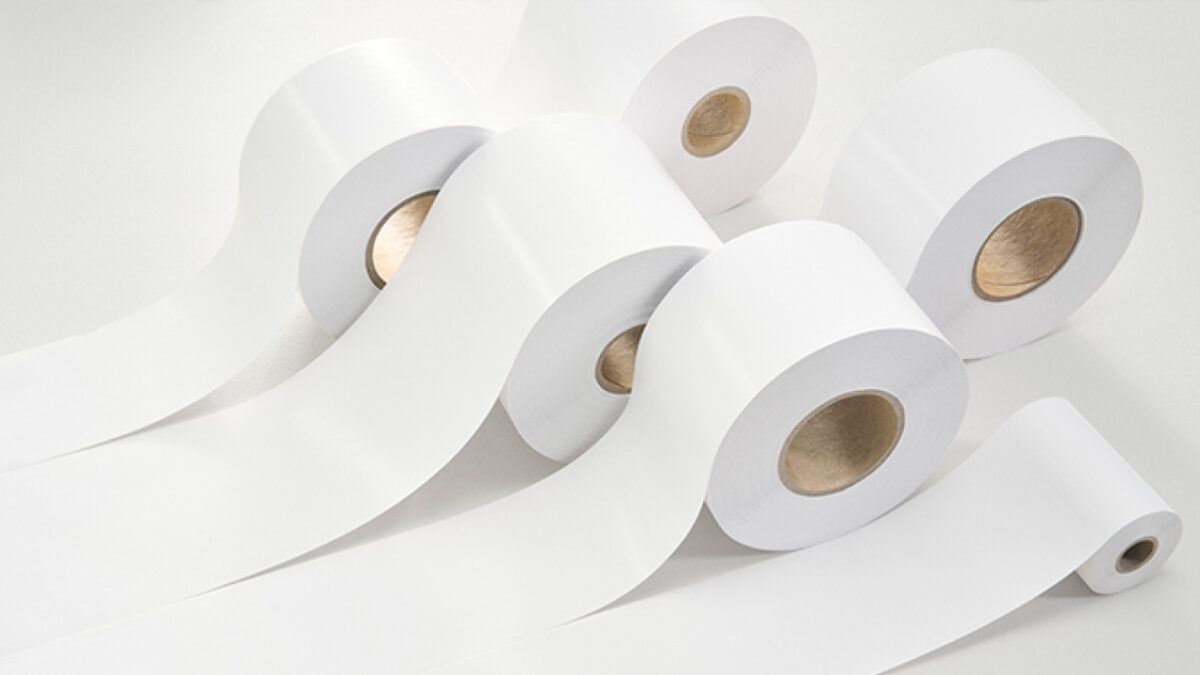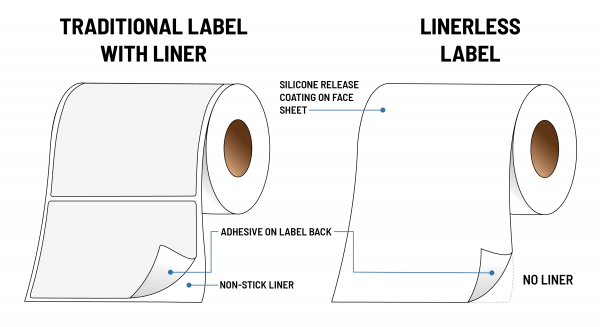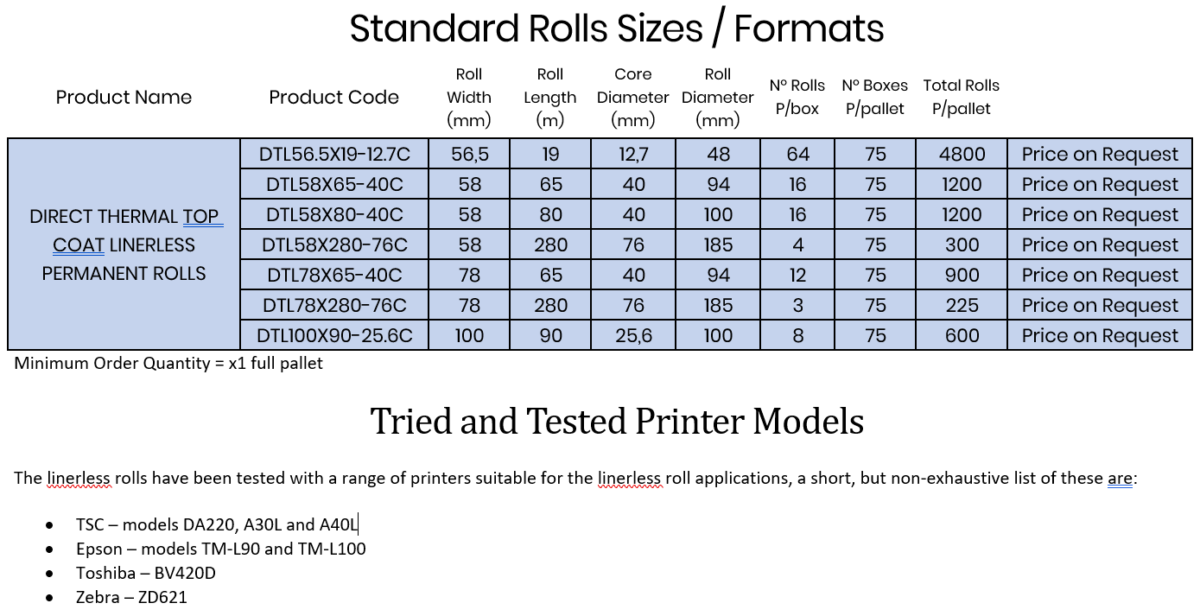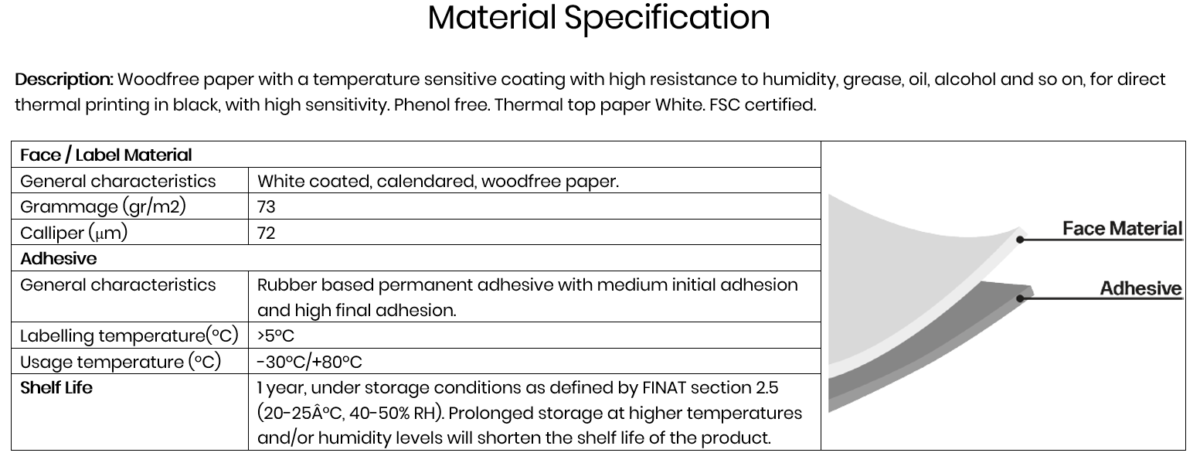What are Linerless Labels?

WHAT DOES LINERLESS MEAN?
The main difference between linerless labels and standard labels is that they do not have a liner or backing paper to minimize wastage. Linerless labels have a silicon-release coating on the top layer and a rubber-based permanent adhesive. The siliconized surface on the face material stops the labels from sticking to themselves, allowing the material to be printed using Direct Thermal technology and easily peeling away from the label underneath. As linerless labels are produced in a continuous roll format, it also offers the flexibility of printing any label length required.
Linerless labels are typically produced on a high-grade topcoat Direct Thermal paper material, due to the nature of their manufacturing process. Designed for relatively short-term printing applications such as shipping labels, address labels, weigh scale labels etc. The hotmelt permanent adhesive can withstand a wide temperature range and has a good initial tack making it ideal for a multitude of applications.

WHAT ARE THE BENEFITS AND WHY SWITCH TO LINERLESS LABELS
FLEXIBILITY:
With Linerless labels you have the ability to print labels of varying lengths.
Lineless labels can also be used in a wide variety of applications and industries. These include food and beverage, pharmaceutical labelling, retail, parcel delivery, and many more. Linerless labels have now become commonplace in shipping and mailing.
Supermarkets will use linerless labels in some of their more low-temperature areas, such as fresh fish, butchers and delicatessen counters, where food has to be kept at a specific temperature, and the labels need to print at those temps.

ENVIRONMENTAL IMPACT:
With no liners, there is less waste on the label. This will have a positive impact on the environment as you will be decreasing your warehouse footprint. You also get more labels per roll, which will cut down on the space required for storage.
IMPROVED PRODUCTIVITY:
With fewer roll changes required between print runs, there is less downtime for the printer. This will improve manufacturing efficiency, and thus be a cost-saving exercise for the business. With linerless labels there is no peeling required, again this allows for faster processing and a more efficient print run.
COST SAVINGS:
Linerless labels can be up to 40% lighter than traditional label rolls. With linerless labels, you have more labels per roll which means you buy less and save on storage. With no backing, there is less to dispose of, saving money on that side of the operation.
LINERLESS CHALLENGES
The most obvious challenge to the move to linerless label printing is compatibility with your current printer setup. It is important to fully test your printer before the move. Standard thermal desktop and mobile printers are not compatible.
Desktop and mobile linerless printers feature a special platen roller with a non-stick surface to reduce the instances of the label adhesive sticking to the platen roller. As labels are printed, the adhesive comes into direct contact with the platen roller because there is no liner to serve as a buffer.
Desktop linerless printers feature a special cutter to cut the labels to size as they are produced in contrast to a regular desktop printer.

CONSIDERATIONS WHEN IMPLEMENTING A LINERLESS SOLUTION?
TESTING AND MAINTENANCE
To minimize cleaning and maintenance, linerless media needs to be extensively tested in compatible printers to ensure minimal adhesive build-up, optimal print quality, and smooth label throughput. You will also need to replace existing platen rollers and printheads. The label release coating has to be correctly cured, to ensure it is compatible with the platen roller.
PROPER MANUFACTURING
It is important that labels are precisely manufactured as they cannot easily be adjusted on the roll.
PRINT PERFORMANCE
Linerless labels require a higher print darkness setting than standard direct thermal labels. The heat generated by the printhead must penetrate through the release coating to activate the direct thermal chemistry to create a readable and durable image. To ensure the release coating does not build up on the printhead, extended print quality testing is required.
